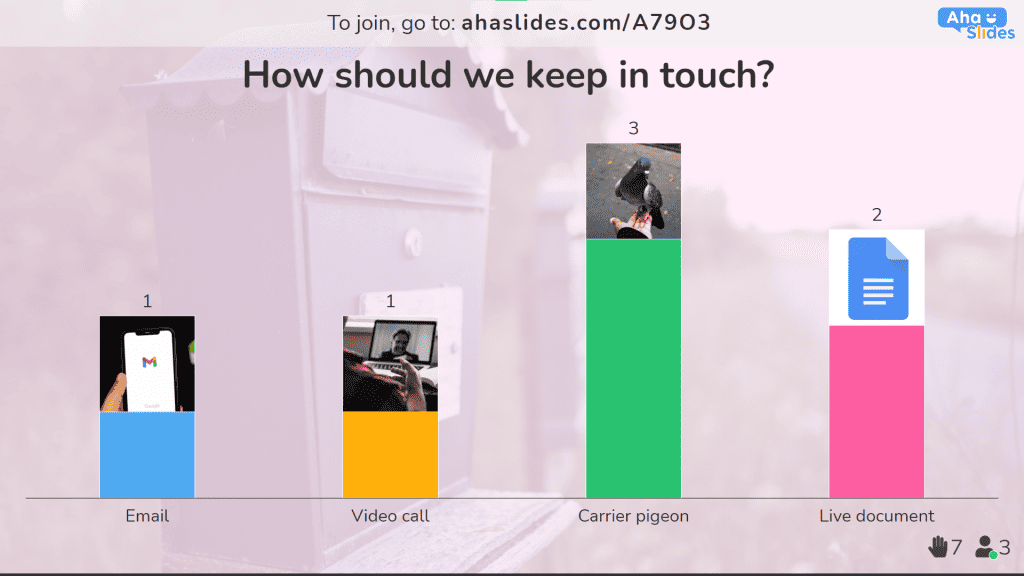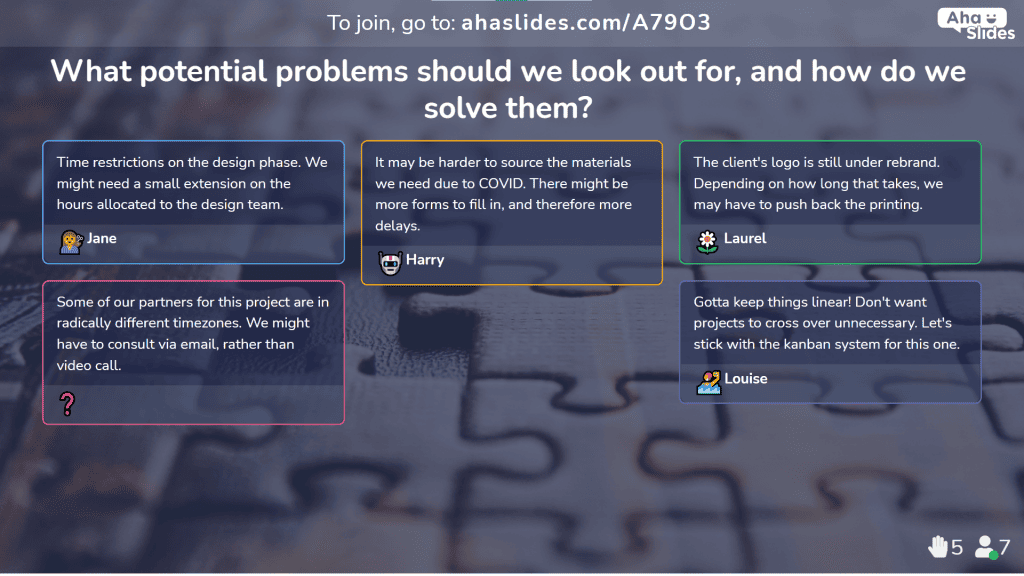Even the most disciplined companies out there can sometimes feel their projects going astray. More often than not, the problem is one of preparation. The solution? A well-structured and fully interactive project kickoff meeting!
More than mere pomp and ceremony, a well-executed kickoff meeting can really get something beautiful off on the right foot. Here are 8 steps to holding a project kickoff meeting that builds excitement and gets everyone on the same page.
Kickoff Time!
- What is a Project Kickoff Meeting?
- Why are Project Kickoff Meetings so Important?
- 8 Steps to a Kickass Project Kickoff Meeting
- Project Kickoff Meeting Agenda Template
What is a Project Kickoff Meeting?
Like it says on the tin, a project kickoff meeting is a meeting where you kick off your project.
Usually, a project kickoff meeting is the first meeting between the client who ordered a project and the company that will bring it to life. Both sides will sit down together and discuss the foundations of the project, its purpose, its goals and how it will get from idea all the way to fruition.
Generally speaking, there are 2 types of kickoff meetings to be aware of:
- External Project Kickoff - A development team sits down with someone from outside the company, like a client or stakeholder, and discusses the plan for a collaborative project.
- Internal PKM - A team from within the company sits down together and discusses the plan for a new internal project.
While both of these types may have different outcomes, the procedure is pretty much the same. There is essentially no part of an external project kickoff that isn't part of an internal project kickoff - the only difference will be who you're holding it for.
Why are Project Kickoff Meetings so Important?
The purpose of Kickoff Meetings should be loud and clear! It may seem simple enough to kick off a project just by assigning a bunch of tasks to the right people, especially in today's Kanban board-obsessed workplace. However, this can lead to teams continuously losing their way.
Remember, just because you're on the same board doesn't mean you're on the same page.
At the heart of it, a project kickoff meeting is an honest and open dialogue between a client and a team. It's not a series of announcements as to how the project is going to work, but a conversation about plans, expectations and goals arrived at by unbridled debate.
Here are some of the benefits of holding a project kickoff meeting:
- It gets everyone prepared - "Give me six hours to chop down a tree and I will spend the first four sharpening the axe". If Abraham Lincoln was alive today, you can be assured he'd be spending the first 4 out of 6 project hours in a project kickoff meeting. That's because these meetings contain all the necessary steps to get any project off on the right foot.
- It involves all key players - Kickoff meetings can't get started unless everyone's there: managers, team leads, clients and anyone else with a stake in the project. It's so easy to lose track of who's in charge of what without the clarity of a kickoff meeting to figure it all out.
- It's open and collaborative - As we said, project kickoff meetings are debates. The best ones engage all attendees and bring the best ideas out of everyone.
8 Steps to a Kickass Project Kickoff Meeting
So, what exactly is included in the agenda of a project kickoff meeting? We've narrowed it down to the 8 steps below, but you should always remember that there's no set menu for this type of meeting.
Use these 8 steps as a guide, but never forget that the final agenda lies with you!
Step #1 - Introductions and Ice Breakers
Naturally, the only way to kick off any kickoff meeting is by getting the participants familiar with each other. No matter the length or magnitude of your project, clients and team members need to be on first-name terms with each other before they can work efficiently together.
While a simple 'go-round-the-table' type introduction is enough to get people familiar with names, an icebreaker can add another layer of personality and lighten the mood ahead of the project kickoff.
Try this one: Spin the Wheel 🎡
Lay out some simple introduction topics on a spinner wheel, then get each team member to spin it and answer whatever topic the wheel lands on. Funny questions are encouraged, but be sure to keep it more or less professional!

Want more like this? 💡 We've got 10 icebreakers for any meeting right here.
Step #2 - Project Background
With the formalities and festivities out of the way, it's time to kick on by kicking off the stone-cold business. In order to launch the meeting successfully, you should have a clear agenda for the kick-off meeting!
As all great stories do, it's best to begin at the beginning. Outline all correspondence between you and your clients to get everyone involved in the project fully up to scratch on what's happened so far.
This could be screenshots of emails, texts, minutes from prior meetings or any resources that add any sort of context for your company and your client. Make it easy for everyone to visualise by making a timeline.
Step #3 - Project Demand
In addition to the correspondence background, you'll want to dive deep into the details of why this project is being kicked off in the first place.
This is a crucial step as it provides a clear overview of the pain points that the project is looking to solve, which is something that both teams and clients have to keep at the forefront of their minds at all times.

Protip 👊
Stages like this are ripe for discussion. Ask your clients and your team to put forward their ideas as to why they think this project was dreamt up.
If applicable, you should always try to channel the voice of the customer in this section. Collaborate with the client to source real-world examples of consumers mentioning pain points that your project is trying to fix. Their opinions should shape how your team approaches the project.
Step #4 - Project Goals
So you've looked into the past of the project, now it's time to look at the future.
Having direct goals and a clear definition of success for your project will really help your team work towards it. Not only that, it will show your client that you're serious about the work and have similarly high stakes in how it goes.
Ask your kickoff meeting attendees 'what will success look like?' Is it more customers? More reviews? A better customer satisfaction rate?
No matter the goal, it should always be...
- Achievable - Don't overstretch yourselves. Know your limits and come up with a goal you actually have a chance of achieving.
- Measurable - Propose your goal with data. Aim for a specific number and track your progress towards it.
- Timed - Give yourself an end date. Do everything you can to reach your goals before that deadline.
Step #5 - The Statement of Work
Putting the 'meat' in 'kickoff meeting', a Statement of Work (SoW) is a hefty dive into the specifics of the project and how it's going to be carried out. It's the main billing on the kickoff meeting agenda and should be receiving most of your attention.
Check out this infographic about what to include in your statement of work:

Bear in mind that the statement of work is not as much about discussion as the rest of the project kickoff meeting agenda. This is really the time for a project lead to simply lay out the plan of action for the forthcoming project, then save the discussion for the next item of the meeting.
Just like the rest of your kickoff meeting, your statement of work is super variable. The specifics of your statement of work will always depend on the complexity of the project, the size of the team, the parts involved, etc.
Want to know more? 💡 Check out this comprehensive article on crafting a statement of work.
Step #6 - Q&A Section
While you may feel compelled to leave your Q&A section until the end, we'd actually recommend holding it directly after your statement of work.
Such a beefy segment will surely give rise to questions from both your client and your team. With the bulk part of the meeting being so fresh in everyone's minds, it's best to strike while the iron is hot.
Using interactive presentation software to host your Q&A can help keep everything ticking along smoothly, especially if your project kickoff meeting has a high attendance number....
- It's organised - Questions are arranged by popularity (through upvotes) or by time and can be marked as 'answered' or pinned to the top.
- It's moderated - Questions can be approved and dismissed before they're shown on screen.
- It's anonymous - Questions can be submitted anonymously, meaning that everyone has a voice.
Step #7 - Potential Problems
Like we said before, a project kickoff meeting is about being as open and honest as possible. That's how you build a sense of trust with your client from the get-go.
To that end, it's best to discuss the potential problems that the project might face along the way. No one's asking you to predict the future here, just to come up with a tentative list of barriers you may run into.
As you, your team and your client will be approaching this project with different stakes, it's ideal to get everyone involved in the potential problem discussion.
Step #8 - Checking In
Checking in with your client regularly is another way to solidify trust between both parties. At your project kickoff meeting, you've got a few questions to address about what, when, who and how these check-ins are going to happen.
Checking in is a rather fine balancing act between transparency and effort. While it's nice to be as open and transparent as possible, you have to manage this within the scope of how available you'll actually be to be open and transparent.
Make sure you have these questions answered before the end of the meeting:
- What? - Exactly in what detail does the client need updating? Do they need to know about every tiny detail of progress, or is it just the big sign offs that matter?
- When? - How often should your team update your client? Should they relay what they've done every day, or just sum up what they've managed at the end of the week?
- Who? - Which team member will be the one who liaisons with the client? Will there be a member of each team, at each stage, or just one singular correspondent throughout the whole project?
- How? - By what method are the client and the correspondent going to stay in touch? Regular video call, email or continuously updated live document?
As is the case with most items on the agenda of a project kickoff meeting, it's best to discuss in the open. For a big team and large group of clients, you might find it easier to do a live poll in order to whittle down the options to establish the best check-in formula possible.


Want to know more? 💡 Check out some best practices for checking in with your clients.
Project Kickoff Meeting Agenda Template
With your expertly planned kickoff meeting just waiting to blow some minds in the boardroom, the last touch may be a bit of interaction to bring it all together.
Did you know that only 29% of businesses feel connected with their clients (Gallup)? Disengagement is an epidemic at B2B level, and it can leave kickoff meetings feeling like a flat, uninspiring process through the formalities.

Engaging your clients and teams through interactive slides can really boost participation and heighten attention spans.
AhaSlides has an arsenal of tools including live polls, Q&A and brainstorming slides, and even live quizzes and games to ignite your project in the right way.
Click below to grab a free, no-download template for your kickoff meeting. Change anything you want and present it at no cost!
Click below to create a free AhaSlides account and start creating your own engaging meetings through interactivity!









